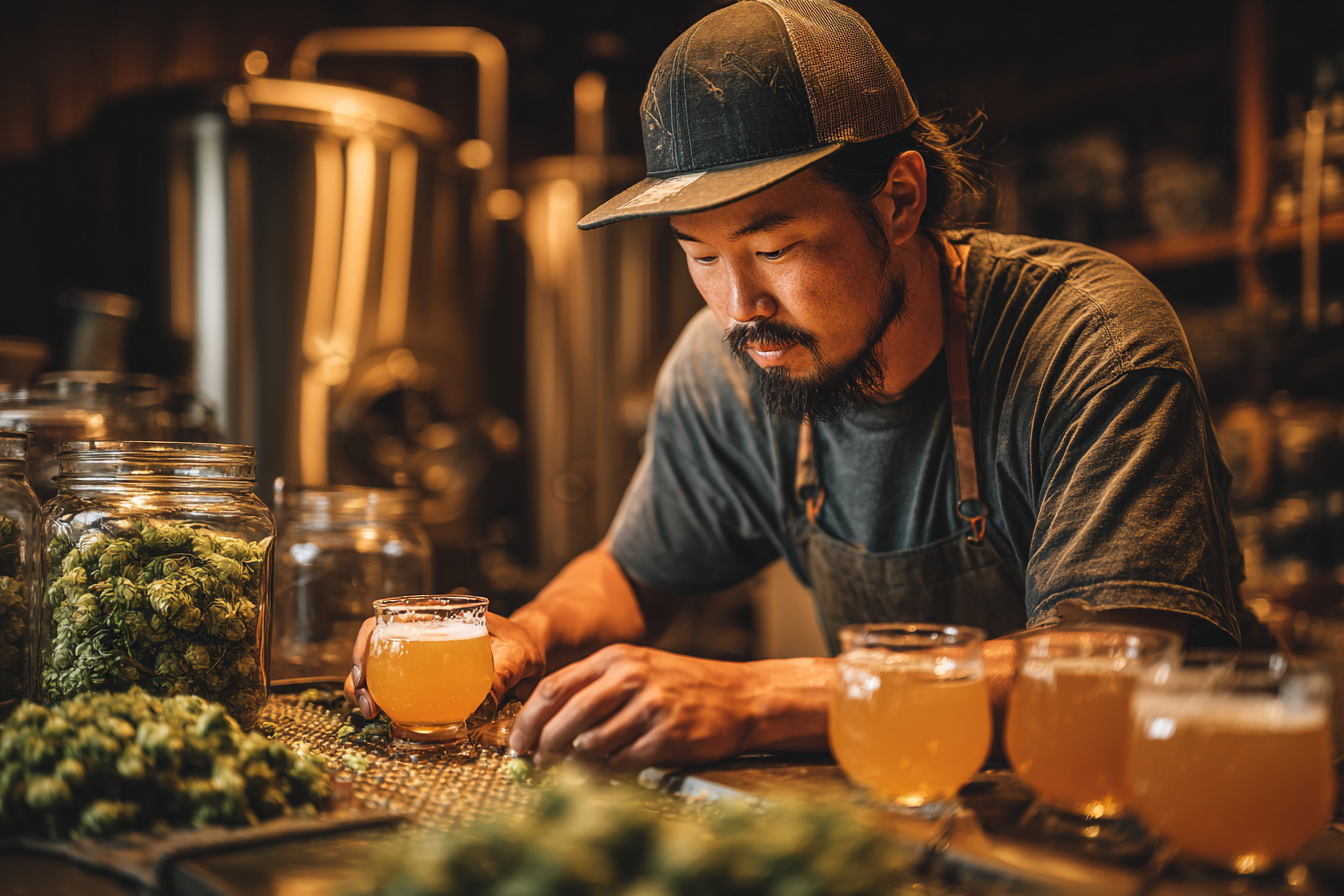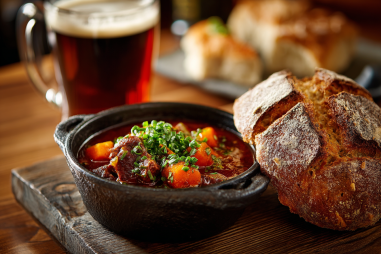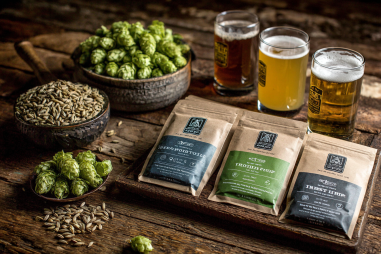Brewing a New England IPA (NEIPA) at home can be an incredibly satisfying process, but it comes with its own set of unique challenges. Those trademark hazy appearances, juicy hop-forward flavors, and smooth, creamy mouthfeel are what make NEIPAs stand out, yet achieving these characteristics requires attention to detail and some specialized techniques. Whether you’re a seasoned homebrewer or just diving into the hazy IPA craze, understanding the nuances behind ingredient selection, water chemistry, and fermentation can elevate your brew to the next level. Let’s explore essential tips that will help you consistently craft that perfect New England IPA.
Choosing the Right Ingredients and Ensuring Quality
The foundation of any great NEIPA starts with quality ingredients. Since this style leans heavily on hop flavor and aroma, selecting the right hops is crucial. Popular hop varieties for NEIPAs include Citra, Mosaic, Galaxy, Amarillo, and Simcoe. These hops contribute tropical and citrus flavors that define the juicy character of the beer.
For the malt bill, a simple yet effective base usually involves a combination of pale malt and generous additions of flaked oats or wheat. These adjuncts boost body and contribute to that smooth, creamy mouthfeel that NEIPAs are known for. They also help with haze stability, which is a key trait of the style.
Yeast selection also plays a big role, as certain strains not only ferment clean but also help enhance fruitiness and haze. English ale or Vermont ale yeast strains, such as Wyeast 1318 or White Labs WLP066, are popular choices because of their fruity ester profiles and good flocculation behavior that keeps the beer hazy but not overly cloudy.
Optimizing Water Chemistry for the Perfect Haze and Mouthfeel
Water chemistry is often overlooked by homebrewers but plays an essential role in brewing a great NEIPA. The style benefits from a softer water profile with a relatively high chloride-to-sulfate ratio. Chloride enhances the beer’s fullness and smoothness, while a moderate sulfate level keeps bitterness balanced without drying out the finish.
A good starting point is to aim for about 150-200 ppm chloride and keeping sulfates lower, around 50-75 ppm. Adding calcium chloride and gypsum to distilled or RO water can help achieve this balance. Proper calcium levels (around 50-100 ppm) are also important for enzymatic activity during mash and yeast health during fermentation.
Mash Schedule and Fermentation Techniques
The mash profile can influence body, residual sweetness, and mouthfeel. A single infusion mash at around 150-152°F (65-67°C) will produce a moderately fermentable wort that retains body and sweetness, enhancing the creamy texture of the final beer. Using a protein rest is not typically necessary with modern malts, but if you’re using older or less-modified malt, a short rest at 122°F (50°C) can aid in body development.
Fermentation temperature control is key to preserving hop aroma and avoiding off-flavors. Most NEIPA yeast strains perform best around 65-70°F (18-21°C). Maintaining a steady fermentation temperature helps yeast express desirable fruity esters without producing harsh fusel alcohols or unwanted sulfur compounds.
It’s also beneficial to ferment to near-final gravity before dry hopping to minimize hop creep (when hops introduce enzymes that further ferment dextrins) and avoid packaging issues.
Timing Your Hopping and Dry Hopping for Juicy Flavor
Hop timing is fundamental in defining the juicy, fruity hop character while minimizing bitterness and harshness. In NEIPAs, the focus is on late additions and dry hopping rather than early bittering hops.
- Late kettle additions: Adding hops in the last 5-10 minutes of the boil or even whirlpool hopping at around 170°F (77°C) preserves more fruity oils and reduces harsh bitterness.
- Dry hopping: This is the hallmark of NEIPA brewing. Performing multiple dry hop stages during active fermentation (biotransformation dry hopping) can help extract complex flavors, as yeast interacts with hop compounds, enhancing juiciness and haze.
- Hop quantities: Don’t be shy to go big with hop amounts in dry hopping. However, avoid excessive dry hops which can lead to grassy or astringent notes.
Be sure to add dry hops gradually in stages, starting a few days into fermentation and possibly another addition after primary fermentation is complete but before packaging.
Preventing Off-Flavors Common in NEIPA Brewing
Off-flavors can ruin what should be a fresh, lively beer. Some common issues to watch for in NEIPAs include:
- Vegetal or grassy flavors: Often caused by overusing dry hops or steeping them at too warm a temperature. Cool dry hopping at temperatures below 70°F helps reduce this risk.
- Oxidation: NEIPAs are sensitive to oxygen exposure. Minimizing oxygen contact after fermentation preserves hop aroma and freshness. Use closed transfers and purge your packaging vessels with CO2.
- Diacetyl or sulfur: Incomplete fermentation or stressed yeast can cause buttery or sulfur smells. Ensure proper yeast pitching rates, nutrient levels, and fermentation temperature control.
Packaging and Carbonation Tips for a Smooth Finish
Proper packaging practices contribute to the final impression of your NEIPA. To keep the beer fresh and aromatic:
- Use kegs or bottles that minimize oxygen contact. For bottled beer, ensure good priming measurements and bottle conditioning times.
- Carbonation: NEIPAs usually feature moderate carbonation levels, around 2.5 to 2.8 volumes of CO2. This offers a creamy mouthfeel without excessive fizziness.
- Cold crash and short aging: A brief cold crash prior to packaging helps settle some particulates without removing the characteristic haze, and it’s best to consume NEIPAs fresh to enjoy their vibrant hop flavors.
Troubleshooting and Refining Your NEIPA Recipes
Every batch is a learning opportunity, so keep detailed notes on your process including ingredients, timings, temperatures, and sensory feedback. If you notice issues like excessive bitterness, haze loss, or off-flavors, consider the following adjustments:
- Modify hop addition timing or amounts.
- Adjust mash temperature to tweak body and sweetness.
- Reconsider water profile or yeast strain choice.
- Evaluate fermentation temperature control and yeast health.
- Refine dry hopping techniques, including hop quantity and timing.
Trial and error combined with careful observation will help you dial in your perfect NEIPA recipe.
Finding Your Signature New England IPA
Making a successful New England IPA at home is about balancing science with creativity. By carefully selecting your ingredients, tweaking your water chemistry, paying attention to fermentation nuances, and mastering hop timing and dry hopping, you can create hazy, juicy beers with a luscious mouthfeel that rival commercial offerings. Stay patient, document your experiments, and embrace the process—each batch brings you closer to brewing your uniquely delicious NEIPA masterpiece.







